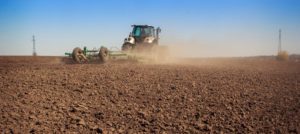Pesticides are substances that control various types of pests, such as weeds, harmful insects, and disease causing organisms like fungi. Pesticides are used all over the world and are the most effective and efficient pest control tools available to Agricultural growers.
Being the highly used tools of pest control, pesticides have a likelihood to develop resistance if not properly used and this is a serious and growing problem. This resistance refers to the change in the sensitivity of a pest population to a pesticide, resulting in the failure of the pesticide to control the target pest. Across the world more than 600 species of pests have developed resistance to pesticides.
With pesticide resistance, it is not just about the individual pest (insect, weed or microorganism) initially targeted for control that changes, but the whole population with time, because some pests will survive exposure to pesticides then their offspring will carry the genetic make-up of these parents and will become a greater proportion of the population with each succeeding generation. These pest populations that have developed resistance can spread across the Agricultural zones of the world through trade in plant materials and produce or introductions. Growers should therefore note that, if resistance to a particular pesticide family or group of pesticides evolves, those products will no longer be effective and this reduces the options available for pest management.
Pesticide resistance will develop when the same pesticide or those with the same mode of action are used over and over again without alternation. It will also be accelerated in instances where pesticide applied dont get sufficient time inside the pest’s body to ensure kill, cases of fast degradation of pesticides in the environment and when some pests like certain insects have mechanisms to avoid contact resulting to limited exposure.
Managing pesticide resistance involves several strategies that growers should adopt and practice;
Where compatibility for pest control is possible, input of natural enemies and biocontrol agents to complement use of chemical pesticides is recommended
With chemical pesticides as the choice, it should be for corrective action and in line with scouting, it should aim to achieve optimum results, should be the right pesticide and alternation of different modes of action products should be in place.
Growers should use the right spraying techniques that ensures coverage reaching target pests, should ensure sprays are done at the right time, adherence to effective application of pesticides by use of high volume of water for coverage and intrusion, use of good sprayers with small to medium droplet size.
Additionally, it is important to consider the best conditions for spraying which include minimal wind, clouded skies, Optimal Temperature of about 20ºC and sufficient relative humidity.
Plant materials and produce should be free of pests before transportation to limit introduction of resistance pests to other zones.
Growers have an overall contribution towards ensuring the useful life of the limited chemical groups available as pesticides and together we can manage pesticide resistance.






